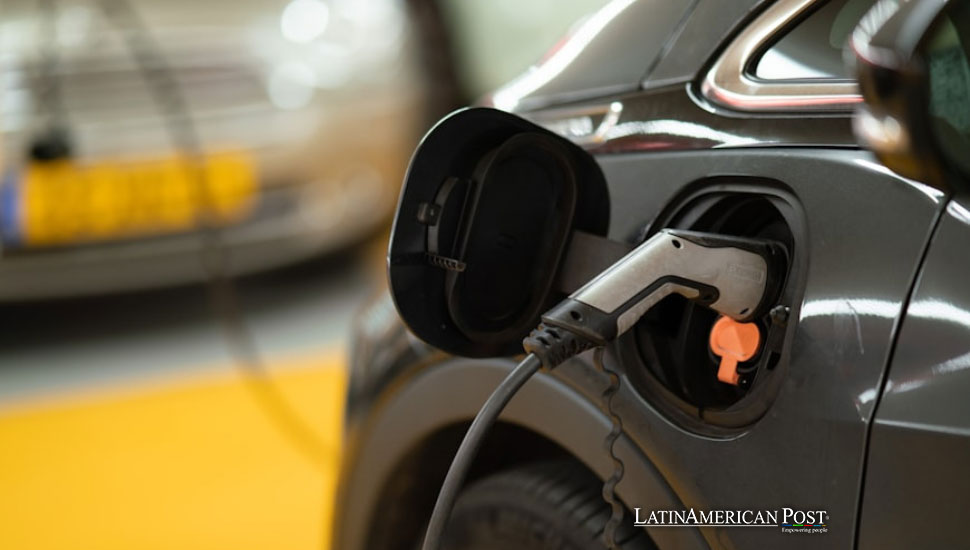The Future of Electric Mobility in Latin America: A $10 Billion Opportunity

By 2030, Latin America and the Caribbean must invest $10 billion in renewable energy to support the region’s rapidly growing electric vehicle market. With electrification on the rise, the future of transportation is greener and closer than ever.
Growing Market for Electric Mobility in Latin America
Electric mobility is no longer a distant dream for Latin America and the Caribbean. The region has seen remarkable growth in adopting electric vehicles (EVs) over the past four years, with the number of electrified light cars increasing by more than fourteen times. According to the Latin American Energy Organization (Olade), this rapid growth is only expected to accelerate. By 2030, Latin America could have as many as 20 million electric vehicles on its roads, including 72,000 electric buses, offering cleaner, more sustainable transportation options for millions.
Both public and private sector initiatives have driven this expansion. Governments across the region are implementing policies to incentivize the transition to electric mobility, while automakers and energy companies are investing heavily in infrastructure to support EVs. Charging stations are popping up across major cities, and electric buses are being integrated into public transportation systems. Latin America is starting to embrace the future of transportation, and the momentum is only growing stronger.
One key reason behind this push is the urgent need to reduce carbon emissions and combat climate change. Latin America is particularly vulnerable to the effects of climate change, and governments recognize that transitioning to electric mobility is a crucial part of the solution. Countries can significantly reduce their carbon footprints by replacing gasoline-powered vehicles with EVs while improving air quality in congested urban areas.
According to a recent Inter-American Development Bank (IDB) study, Latin America is expected to sell 1.2 million electric vehicles annually by 2030, contributing to a global EV market that could reach 250 million. This growth represents a significant shift in the region’s transportation landscape, positioning Latin America as a potential global electric vehicle revolution leader.
The $10 Billion Investment
While the growth of electric vehicles is exciting, it also presents new challenges, chief among them being the need for a massive increase in renewable energy capacity. As more EVs hit the roads, the demand for electricity to charge them will rise dramatically. According to Olade, the region will require 46,943 gigawatt-hours of electricity by 2030 to power its expanding fleet of electric vehicles. This represents about 3% of the region’s current electricity generation, and meeting this demand will require a significant investment in renewable energy.
To achieve this, Latin America must install an additional 11,405 megawatts of electricity generation capacity, primarily from renewable sources such as solar, wind, and hydropower. This will require an estimated $10 billion investment over the next decade. While this is a substantial sum, the benefits are equally significant. Not only will the region reduce its dependence on fossil fuels, but it will also create new jobs and economic opportunities in the renewable energy sector.
In many ways, Latin America is already well-positioned to make this transition. Countries like Costa Rica, Uruguay, and Chile are global leaders in renewable energy production, with a large percentage of their electricity coming from clean sources. By expanding their renewable energy infrastructure, these countries can support the growing demand for electric vehicles while continuing to reduce their carbon emissions.
Investing in renewable energy also presents a unique opportunity for Latin America to become a key player in the global clean energy market. As the world moves away from fossil fuels, countries that invest in renewable energy now will be at the forefront of the green economy of the future.
How Latin America Stacks Up in the EV Race
While Latin America is making significant strides in adopting electric vehicles, the region still has some catching up compared to China, Europe, and the United States. Currently, Latin America has 3.8 electric vehicles per 10,000 inhabitants, a figure that lags far behind China’s 241 per 10,000, Europe’s 183 per 10,000, and the U.S.’s 72 per 10,000. However, Latin America is leading in other areas, such as electric buses and charging infrastructure.
For instance, by 2023, Latin America had over 5,000 electric buses in operation, a 160% increase over the last three years. With 7.7 electric buses per million inhabitants, the region is ahead of Europe (3 buses per million) and the U.S. (0.9 buses per million). However, it still trails behind China, which has an impressive 299 electric buses per million inhabitants. This shows that while Latin America may have fewer electric cars on the road, it is making significant progress in electrifying public transportation.
Latin America is also making strides in terms of charging infrastructure. The region boasts 4,848 public charging stations, averaging 3.3 stations per 100 electric vehicles. This puts it ahead of Europe (1.3 per 100) and the U.S. (2.8 per 100) but still behind China’s 5.1 stations per 100 vehicles. This infrastructure is crucial for supporting the growth of electric mobility, as drivers need easy access to charging points to keep their cars running.
Despite these challenges, Latin America’s electric vehicle market is poised for exponential growth over the next decade. If the current trend continues, the region could represent 4% of the global electric vehicle market by 2030, potentially becoming a key player in the worldwide transition to clean energy transportation.
A Green Road Ahead
As Latin America continues its journey toward a greener, more sustainable transportation system, several key challenges and opportunities lie ahead. One of the biggest challenges will be ensuring that the region has the infrastructure to support the growing number of electric vehicles. This includes building more charging stations and ensuring that the electricity used to power EVs comes from renewable sources rather than fossil fuels.
To address this, many countries are implementing policies to promote the growth of renewable energy and ensure that the electricity grid can handle the increased demand for electric vehicles. Andrés Rebolledo, the Secretary of Olade, emphasized the need to ” harmonize regulatory frameworks” across the region and create “green international corridors” with sufficient and standardized charging infrastructure.
The future also holds exciting technological advancements that could further accelerate the adoption of electric vehicles in Latin America. Innovations in battery technology are making EVs more affordable and efficient, while the development of autonomous electric vehicles could revolutionize transportation in ways we can only begin to imagine. As these technologies continue to evolve, Latin America has the opportunity to be at the forefront of the global electric mobility movement.
One area where the region could play a pivotal role is in the production of lithium, a key component of electric vehicle batteries. Latin America is home to some of the world’s largest lithium reserves, particularly Chile, Argentina, and Bolivia. Investing in lithium mining and processing could make these countries significant global EV supply chain players, providing the raw materials needed to power future electric vehicles.
Ultimately, the future of electric mobility in Latin America is bright. With the right investments and policies, the region has the potential to reduce its carbon footprint and become a global leader in the transition to clean energy. As electric vehicles become more common on the roads, Latin America is paving the way toward a greener, more sustainable future for transportation.
Also read: How the the World’s Smallest Fruit is Reshaping Coffee in Latin America
Latin America and the Caribbean are on the brink of a significant transformation in transportation, with electric mobility set to play a central role. With an estimated $10 billion investment needed in renewable energy and infrastructure, the region has the opportunity to embrace electric vehicles and lead the charge in the global clean energy revolution. The next decade promises exciting advancements in technology, policy, and sustainability, positioning Latin America as a critical player in the future of electric mobility.





